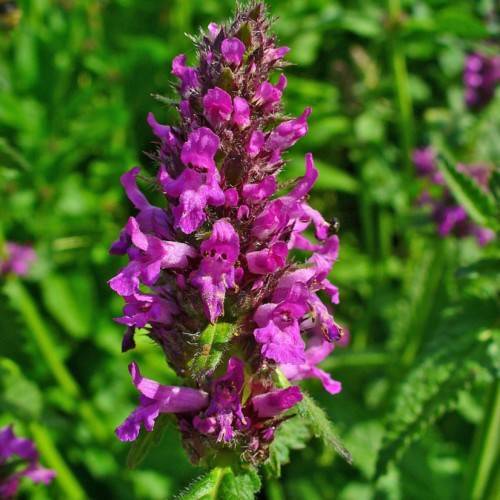
betony
Stachys 'Summer Romance'
Cycle:
Herbaceous Perennial
Watering:
Frequent
Hardiness Zone:
4 - 9
Flowers:
Flowers
Sun:
Full sun
Leaf:
Yes
Growth Rate:
Low
Maintenance:
Low
Drought Tolerant:
Yes
Salt Tolerant:
Yes
Care Level:
Medium
watering
Betony (Stachys 'Summer Romance') should be watered when the soil starts to feel dry to the touch. During hot summer months, the plant may require 1-2 waterings a week depending on how sunny and warm it is in your area. During cooler months, water betony every 1-2 weeks depending on the season. When you are watering your betony, it is important to water deeply and thoroughly, allowing the soil to be completely saturated. This encourages strong root development, which in turn will foster healthy and vigorous growth. Make sure excess water is able to drain away easily, as standing water can lead to root rot. Avoid getting the foliage wet, as this can cause mildew and other leaf diseases.
sunlight
Betony (Stachys "Summer Romance") prefers full sun for much of the day. It particularly enjoys around 6-8 hours of direct sunlight each day for optimal growth and flowering. The exact amount of light may vary depending on the season and the climate, but this plant species will generally do best when exposed to direct sunlight in the morning and again in the late afternoon or early evening. It should be noted that betony is not tolerant of very hot, direct sunlight for long periods of time, so if temperatures are consistently above 85°F, providing some shade during the hottest part of the day is recommended. Additionally, betony may need some additional protection from strong winds, which can cause the foliage to become scorched.
pruning
Betony (Stachys 'Summer Romance') should be pruned in late winter or early spring. It should be pruned back hard - almost to the ground - to promote full, bushy growth. When pruning, make sure to leave some of the smaller branches intact so that the plant can regrow and flower. Pruning should also be done in a way that shapes the shrub attractively, such as to give it a ball shape or many tiers. Keep in mind that this plant may take a while to become established so don’t be discouraged if it doesn’t start growing immediately after pruning.
